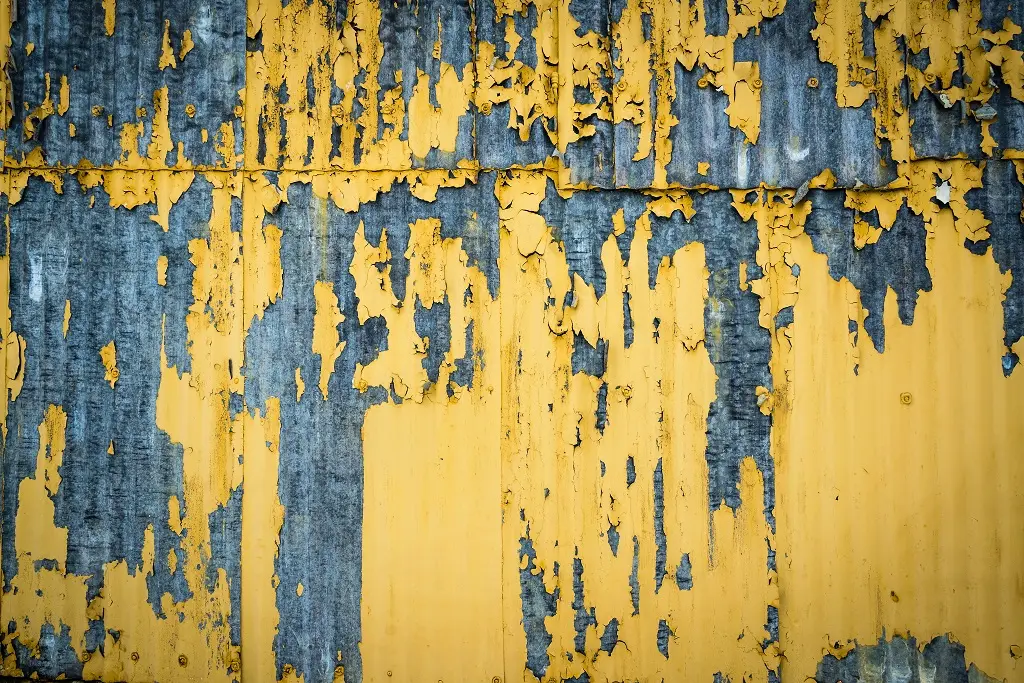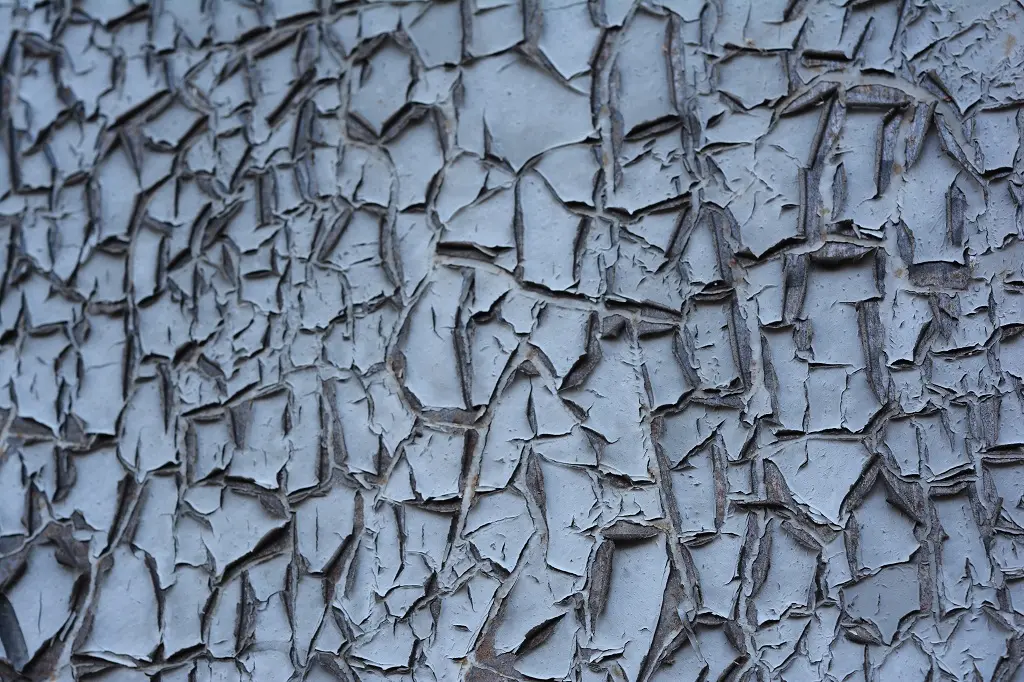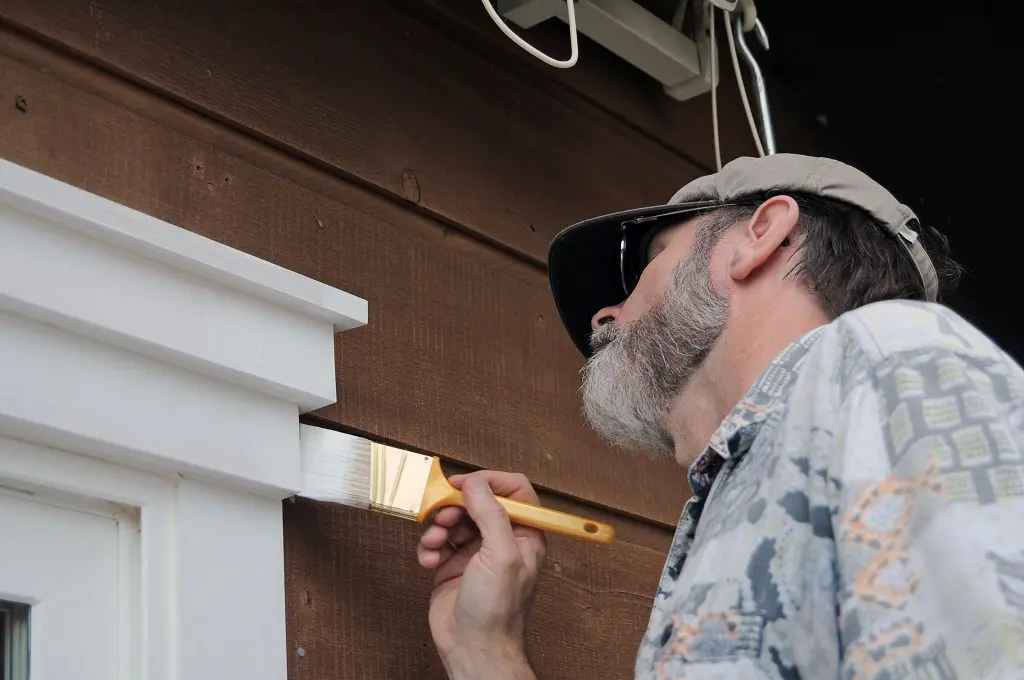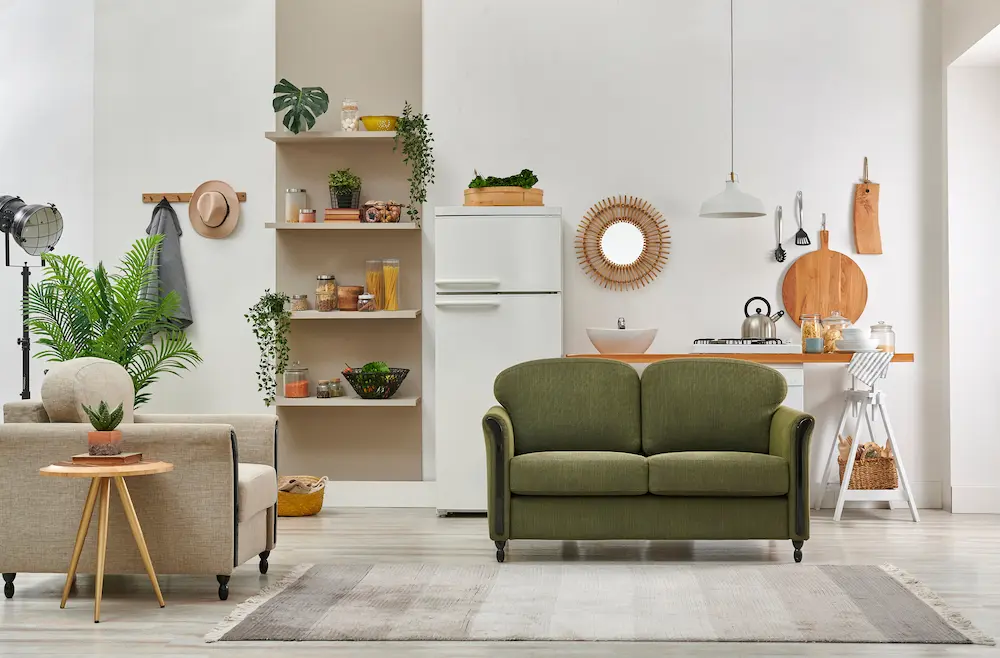Painting the exterior of a house can be daunting, and even the most experienced painters can run into issues. This blog will discuss common exterior painting problems and their solutions. From dealing with blistering paint to mildewed walls and learning what causes paint to bubble, we'll provide you with the information you need to paint your home's exterior like local exterior house painters.
Cracking, Flaking, and Clumping
- Cracks: Lines resembling veins can be barely visible on a painted surface at the start but typically expand and deepen into rough, jagged pieces.
- Clumps: These small lumps or bumps of paint that form on the wall and can be difficult to remove without causing damage.
- Flakes: Paint flakes are small pieces of paint chipped away from the wall, leaving a textured, uneven surface.
Why Does Paint Crack?
- Water/humidity: Paint applied to a wet surface or exposed to high humidity can easily peel off. Plywood is especially susceptible to these issues as it expands and contracts according to the humidity level.
- Expired or Low-Quality Paint: Cheap paints peel quicker than fresh, high-quality paint.
- Improper Application: Incorrect surface application, thin paint, uneven coats, or when paint doesn't dry properly between coats.
Paint Cracking Prevention & Solutions
How to prevent paint cracking on walls or flaking paint:
- Ensure the wall’s surface is clean and dry before painting.
- Use a primer.
- Apply high-quality exterior house paint; several thin coats instead of one thick coat.
- Use a high-grade brush or roller and brush out any air bubbles that form
- Seal the paint with a topcoat.
- Use paint or primer specifically designed for the surface you are painting.
How to fix cracked, loose, or flaking paint:
- Painting over a cracked paint exterior is a no-go. Rather clean and sand the area of the cracked paint.
- Use an appropriate primer, sealer, or paint conditioner.
- Apply a new coat of paint.
- Once the paint has dried, apply a sealant.
- If necessary, apply a second coat of paint.
And there you go! Taking care of exterior paint problems and solutions isn’t so tricky!
Paint Peeling off a Wall

Peeling paint is paint that no longer adheres to the surface it was applied to and starts to come off in flakes, chips, or strips.
Why Does Paint Peel?
Wondering, “why’s my paint peeling?” Here are the reasons:
- Moisture: high humidity levels and improper drainage.
- Improper application: Paint Applied too thickly or too thinly.
- (UV) radiation exposure: The sun's UV rays can cause paint to fade, discolor, and eventually peel.
- Poor quality paint: Cheap paint may not adhere properly to the wall's surface.
- Extreme temperatures: Extreme temperatures, either hot or cold.
Paint Peeling Prevention & Solutions
How to avoid exterior paint adhesion problems:
- To prevent an exterior paint peeling paint problem, make sure that gutters and downspouts are properly draining away from the foundation.
- Install exhaust fans, soffit vents, siding vents, louvers, fans, or dehumidifiers to eliminate moisture.
- Inspect the caulking and repair or replace missing or damaged caulk.
And here’s how to fix peeling paint:
- Scrape away old peeling paint and sand/smooth affected areas.
- Prime the bare area.
- Caulk as required with a high-quality caulking product.
- Repaint with a good paint brand.
Blistering or Bubbling
What causes paint to bubble? Painting film can often lift off the surface, creating multiple rounded bumps known as blisters, especially when painting in humid environments.
Why Does Paint Bubble?
- Direct sunlight: Paint applied on a hot surface dries too quickly and traps solvent vapor.
- Dampness: Damp surfaces cause trapped moisture to expand its film.
- Moisture: Any moisture can push paint off the surface.
- Other causes: A dirty surface, eschewing primer, low-quality latex paint, and improper technique also cause blisters.
Paint Blistering Prevention & Solutions
How to prevent paint bubbling on a wall:
- Properly ventilate the walls, roof, eaves, bathrooms, etc.
- Check for loose or missing caulking and consider installing siding ventilation for added protection.
And here’s how to fix paint bubbles on a wall:
- Scrape away blistered paint with a stiff bristle brush until the surface is entirely bare.
- Let the wood dry completely.
- Prevent exterior paint drying problems by working in non-direct sunlight.
Efflorescence

Efflorescence, a problem in painted masonry construction, is identified by white salt deposits seeping through the paint film from the underlying masonry structure.
What Are the Causes of Efflorescence?
- Poor surface preparation: Basement walls should be waterproofed to prevent groundwater from penetrating the walls.
- Painted masonry: Masonry should only be painted after the concrete or mortar has fully cured and dried.
- Masonry wall cracks: Unrepaired cracks and loose tuckpointing allow water to get behind the masonry walls.
Efflorescence Prevention & Solutions
To prevent painting brick exterior problems such as efflorescence, you can:
- Properly tuckpoint cracks or missing mortar in the wall.
- Clean out gutters and downspouts.
- Caulk joints around windows and doors with a butyl rubber caulk.
The solution:
- Remove all efflorescence and any loose flaking, chalking paint with a wire brush, scraping, or power washing.
- Clean the area with a trisodium phosphate solution and rinse with clean water.
- Let completely dry, then prime and paint with high-quality latex house paint.
Chalking
Paint chalking occurs when paint erodes slowly due to exposure to the elements. This powdery substance (chalk residue) can then be eradicated with pressure washing.
What Causes Chalking?
- Poor Quality of Paint: Low-quality paint often contains fillers and extenders less resilient than higher-quality binders.
- Exposure to Acidic Gases: Certain gases can react with the paint.
- Contamination of Paint by Oils or Grease: These substances can prevent paint from properly adhering to a surface.
Chalking Prevention & Solutions
You can prevent chalking and exterior house paint problems by:
- Removing leaky faucets, pipes, and condensation.
- Sealing any cracks/ crevices in the walls and ceilings.
- Cleaning the walls regularly with a damp cloth.
How to fix chalking:
- Remove chalking with a trisodium phosphate cleaning solution, then clean water.
- Allow the area to dry before applying high-quality latex house paint.
- Scrub with a specialized masonry cleaning solution for brick areas stained by chalking runoff.
Alligatoring and Checking

- Alligatoring: This happens when the paint's surface develops a cracked pattern similar to a reptile's skin, featuring a cracked pattern with deep relief.
- Checking: A less severe form of paint failure than cracking, checking is characterized by long, evenly spaced cracks in the paint film with minimal depth.
What Causes Alligatoring?
Incorrect application: Not allowing paint to dry between coats.
Incompatible paint: Glossy paint or a hard oil enamel over latex-based paint.
Old paint: Aged oil-based paint loses elasticity.
Paint Alligatoring Prevention & Solutions
To prevent common exterior paint problems associated with alligatoring and checking:
- Buy top-quality exterior paint with a high-quality resin to ensure quality exterior coating.
- Use the right brush or roller and apply the paint in multiple thin coats.
- The ideal temperature for painting is 50-90 degrees to ensure proper drying.
How to repair alligatoring:
- Remove the old paint from exterior walls, then sand, prime, and repaint with flexible latex-based paint.
Mildew
Mildew is a fungus that grows in warm, damp places and can cause discoloration and damage paint; it is usually white or gray and may have a musty odor.
What Causes Mildew?
- Humidity and poor ventilation: High humidity levels cause moisture to build up and mildew growth.
- Not allowing painted walls to dry completely: When paint is not allowed to dry completely before being covered, mildew can develop on the walls.
- Not cleaning walls regularly: Dust and other particles on walls can attract moisture.
Paint Mildew Prevention & Solutions
To avoid interior and exterior wall paint problems caused by mildew, you should:
- Improve air circulation by opening windows and doors.
- Use a dehumidifier to reduce moisture.
Follow these steps to get rid of mildew:
- Scrub the affected area with mild detergent and warm water.
- Then, rinse the area with clean water and allow it to dry.
- Mix 1 cup of bleach with 1 gallon of water.
- Apply the bleach solution to the affected area.
- Allow the solution to sit for 10 minutes, then rinse the area with clean water.
- Finally, use a vacuum cleaner to remove any remaining mold spores.
Sagging or Running

Exterior wall paint problems, such as sagging paint, occur when the paint droops or sags down the wall. Running paint is when the paint does not adhere to the wall instead and adequately runs down the wall in streaks.
What Causes Paint Sagging?
- High-gloss surface: If not properly primed, the paint won't stick to the wall.
- Poor application: Applying paint too thickly or thinly causes it to run.
- Unfavorable weather: Hot climates can cause paint to drip.
Paint Running Prevention & Solutions
How to fix running paint:
- Use a brush or roller to evenly spread the excess paint if you notice sagging while the paint is still wet.
- For dry paint, sand down the uneven area and apply a new coat.
- If the surface is glossy, sand it down to create a "tooth" to ensure the paint will adhere better, or use a primer before applying the paint.
- Be sure not to overload your paintbrush and to use proper painting techniques.
Rust
Rust appears as a reddish-brown discoloration on the walls and can be difficult to remove. Paint can rust when exposed to moisture, oxygen, and some chemicals in the environment.
What Causes Paint to Rust?
- Moisture: Rust forms when moisture reacts with iron and oxygen
- Chemical Exposure: Certain chemicals, such as acids and alkalis, can damage the paint and lead to rusting.
Paint Rust Prevention & Solutions
How to prevent rust formation:
- Use rust-resistant Paint.
- Clean your walls regularly to remove any dirt or debris that can lead to rust.
- Applying a protective coating such as a sealant or wax to your walls can help protect them from rust and corrosion.
How to fix rust on walls:
- Remove any loose rust with a wire brush.
- Apply a rust-inhibiting primer and rust-resistant paint.
- Allow paint to dry before applying a sealant.
Foaming and Cratering

Pinholes are tiny holes in the paint coating. Craters are larger holes. Both create weak points where corrosion can begin. They make the paint look bad, compromise corrosion protection, and require a complete project redo.
What Causes Paint Foaming?
- Contamination: Grease, dirt, oil, or dust on the surface of the metal alters its surface tension, resulting in the paint pulling away from that spot and forming a gap in the coating.
- Air bubbles: Air bubbles that don't pop until the paint has dried
- Excessive mixing: Stirring paint too much can create too much foam.
Paint Cratering Prevention & Solutions
How to prevent catering and foaming:
- Mix paint slowly.
- Use the correct ratio of paint to thinner.
- Ensure the surface is clean and free from contaminants.
How to fix catering and foaming:
- Use the correct paint and follow the manufacturer’s instructions for application.
- Clean the surface thoroughly. Apply a primer before painting.
- Stir the paint before and during application to avoid air bubbles.
- Avoid using a sprayer unless experienced. If you use a sprayer, thin the paint with water to reduce the risk of foaming.
Burnishing
Paint burnishing or "marring" refers to a change in a paint's sheen and gloss. Darker colors become shinier, while lighter colors may develop a dull paint film.
What Causes Paint Burnishing?
- Mix of paints: Use of deep, dark, or vibrant colors in conjunction with flat or matt sheen level paints, especially in high-traffic areas.
- Low-sheen paints: These paints cannot withstand abrasion or abuse when applied to broad-wall surfaces in high-traffic areas.
- Frequent washing and spot cleaning: Abrasive cleaning agents or tools (scourers) to wash or scrub painted surfaces.
Paint Burnishing Prevention & Solutions
Tips to avoid burnishing:
- Clean walls with a soft damp cloth and non-abrasive cleaners.
- Avoid using flat and dark-colored paints altogether.
- Apply a wear-resistant clear coating.
How to fix burnishing (honestly, it's best to start fresh):
- Wash and remove all paint before priming.
- Use the right kind of high-quality paint.
Fading or Poor Color Retention

Fading color is the loss of color of one or more color pigments within the paint film. While it's a natural and expected form of paint degradation, it can be exacerbated by other issues.
What Causes Fading or Poor Color Retention?
- (UV) radiation: UV may absorb the pigments within the coating.
- Darker-colored paint: Darker colors tend to absorb more heat and UV radiation, thereby putting greater stress on pigments.
- Coastal environments: Salt and atmospheric moisture create a corrosive environment.
- Over-tinting: Adding tinters to a white paint that is not intended for tinting or over-tinting a light or deep base can trigger fading.
Fading Prevention & Solutions
How to prevent fading paint:
- Use quality exterior paint that's UV-resistant paint.
- Select lighter colors as they tend to absorb less heat & UV radiation.
- Choose colors based on inorganic pigments and/or oxides, which are generally more UV resistant.
- Maintain your property's exterior by regularly washing walls and repainting when needed.
How to fix faded paint:
- The “fading” effect is irreversible once it begins to occur, and the color can often become irregular or patchy.
- Pressure wash and/or scrub the wall with a nonmetallic scouring pad to remove all surface contaminants and chalking before repainting with an approved coating system.
The Perfect Finish Starts With You
Don't let exterior painting problems ruin your home's curb appeal. Read on and learn what causes paint to crack and how to fix peeling and bubbled paint.

Conclusion
Exterior house painting can be challenging, but with thorough preparation and consistent maintenance, you can confidently ensure a smooth uniform appearance. It's crucial to understand the potential issues that can occur and take the necessary steps to mitigate them.
Regular maintenance and timely touchups will ensure that your home's exterior remains in excellent condition for years to come. Alternatively, you can hire high-quality exterior house painters. Why not schedule a complimentary estimate with Oahu Pro Painters?

.webp)

